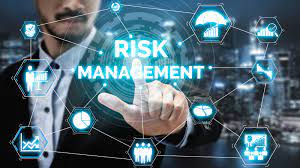
04 Mar Risk Management and AI Algorithms: Be in Control of Your Projects
Project Managers Have One Key Goal: Project Success
By integrating risk management into project management processes, project managers can anticipate and respond to potential challenges, increasing the likelihood of project success.
However, project managers can encounter various pitfalls while managing project risk management. The most common, failing to identify all potential risks at the beginning of the project can lead to oversights and inadequate risk response planning.
It is human nature that we may focus too much on negative risks (threats) and overlook positive risks (opportunities) that could benefit the project if properly leveraged.
Insufficient depth in risk analysis, such as relying on qualitative assessments alone without considering quantitative analysis, can result in inaccurate risk prioritization.
Creating risk management plans that are static and not adaptable to changes in the project environment can render them ineffective as the project progresses.
And even if we create solid risk management plans, failure to continuously monitor and reassess risks throughout the project lifecycle can result in the identification of emerging risks too late for effective mitigation.
Also, depending solely on historical project data without considering evolving project dynamics may lead to outdated risk assessments and neglecting external factors. Changes in the economic or regulatory environment, for example, can lead to unanticipated risks that could impact the project.
Project managers can mitigate these pitfalls by adopting a proactive and adaptive approach to risk management, fostering open communication, involving key stakeholders, and continuously monitoring and adjusting risk management strategies throughout the project lifecycle.
So why not ask AI to give us a hand? AI is expected to have a significant impact in risk management by enhancing the ability to identify, assess, and mitigate risks more effectively. There are several ways in which AI is likely to influence project risk management.
AI can analyze large volumes of project data to identify patterns and trends that may indicate potential risks. Predictive analytics can be employed to forecast potential risks based on historical project data and external factors.
We are somewhat familiar with AI algorithms. AI can automate the process of identifying risks by continuously monitoring project-related data, including schedules, budgets, and team performance.
One of the key challenges in risk management is real-time detection and reaction. AI enables real-time monitoring of project activities, allowing for immediate detection of deviations from the planned course, which can be indicative of emerging risks.
AI can assist project managers in making more informed decisions by providing relevant information and recommendations based on data analysis. It can also simulate different scenarios to assess the potential impact of risks and help in devising effective risk response strategies.
Other ways in which AI can help are by supporting dynamic risk assessment, improving accuracy and consistency, as well as optimizing resource allocation by analyzing historical data and project requirements.
Most importantly, AI can play a crucial role in detecting and mitigating cybersecurity risks and fraud. Machine learning algorithms can continuously learn and adapt to new threats, providing a proactive defense against potential risks.
But we shouldn’t rely 100% on algorithms. While AI holds great promise in enhancing project risk management, it’s important to note that human judgment, experience, and expertise remain crucial in interpreting AI-generated insights and making strategic decisions in response to identified risks.
There are still certain areas where human involvement and judgment remain critical, subjectivity and intuition being some of those. AI may struggle with subjective aspects of risk assessment that require human intuition and experience.
Certain risks may be difficult to quantify or express in purely data-driven terms, relying on the nuanced understanding that human experts possess.
AI can provide valuable insights, but strategic decision-making, especially in response to complex or unprecedented risks, often requires a deep understanding of the business context and long-term organizational goals. This is an area where human judgment is crucial.
In the face of unexpected crises or rapidly evolving situations, human adaptability and quick decision-making are often essential. AI may not possess the real-time adaptability and crisis management skills that human leaders can bring to the table.
Building and maintaining relationships with project stakeholders involves communication, negotiation, and interpersonal skills that go beyond the capabilities of AI. Managing conflicts, understanding political dynamics, and addressing the concerns of various stakeholders require a human touch.
Moreover, establishing trust among project team members and stakeholders is a human-centric skill that involves interpersonal relationships, effective communication, and empathy. Trust is crucial in risk management, especially when addressing uncertainties or conveying sensitive information.
And what about “thinking outside the box”? AI excels at processing existing data and patterns, but it may struggle with creative problem-solving and thinking outside predefined algorithms. Identifying innovative solutions to emerging risks or turning unconventional ideas into successful risk response strategies often requires human creativity.
There are still key areas where human involvement is not only necessary but crucial: Ethical, Social and Cultural considerations.
AI may not fully grasp ethical and social implications associated with certain risks, especially in projects that have broader societal impacts. Decision-making involving ethical considerations often requires human values and a contextual understanding that AI may lack.
Projects often involve teams with diverse cultural backgrounds. Understanding and navigating cultural nuances in risk management and communication may be challenging for AI, which may not fully grasp the subtleties of cultural contexts.
While AI can automate many aspects of risk management, a balanced approach that leverages AI for data analysis and decision support while retaining human expertise for nuanced, strategic, and interpersonal aspects is likely to be the most effective.
Combining AI’s capabilities with human judgment can create a comprehensive and robust project risk management strategy.
Article written by Jorgelina Bross-Puglisi 28th Febrary 2024
https://blog.iil.com/risk-managhement-and-ai-algorithms
